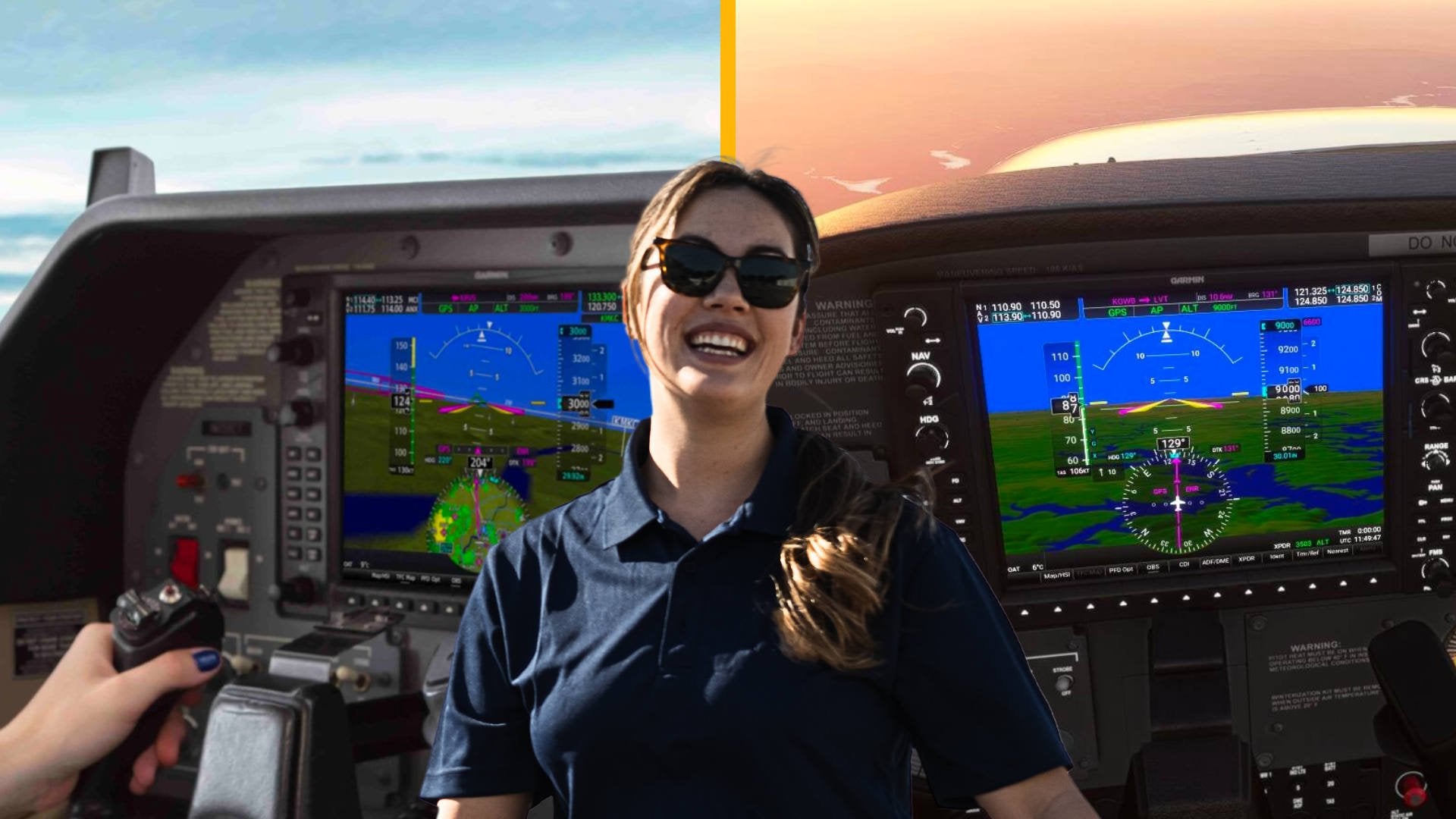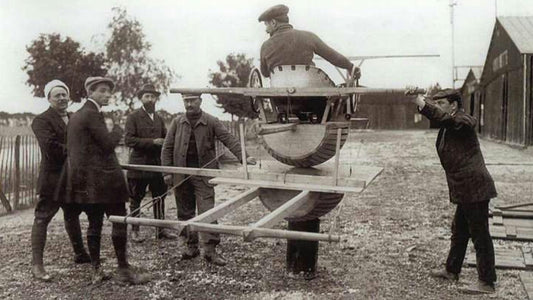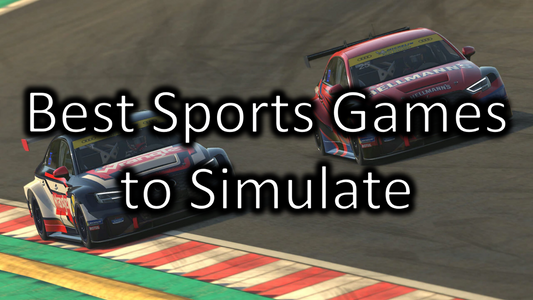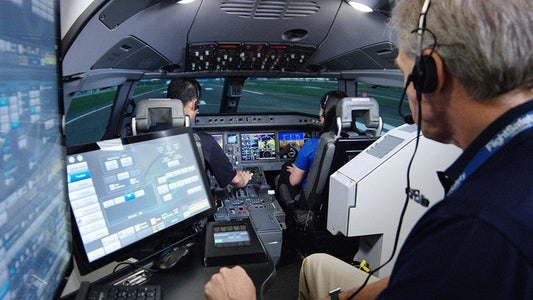10 Things to Consider When Buying a Flight Simulator

Starting with your very first flight simulator? Welcome aboard, pilot! If you’ve always wanted to become a pilot but couldn’t for some reason, know that all hope is not lost...
Flight simulators provide an incredible opportunity to experience the thrill of flying right from the comfort of your home. It’s an experience that can be both exciting and overwhelming. Unlike sim racing, flight simulation is a much more dedicated and niche genre of gaming. While it does not boast a big community and as wide a variety of titles as sim racing does, investing in flight simulation can still be a rewarding decision.
In this flight simulation setup guide, we explore the top 10 things to consider when buying a flight simulator. Let’s get started!
What Makes a Good Flight Simulator?

Figure 1: Flight Simulator Components
A sim flight rig can range from a very basic setup to a fully-fledged dedicated sim rig that rivals flight simulation systems used by pilots during their training. It all depends on how you want to build your sim flight rig.
At the most basic level, you’ll need a capable computer, flight sim software, and a monitor. These are the bare minimum requirements for any flight simulation rig. But if you're aiming for a deeper immersion, you can add gear like joysticks/yokes, throttle quadrants, and rudder pedals. These components help to mimic the feel of flying an actual plane.
For a more enthusiastic experience, optional add-ons like VR headsets, multi-monitor setups, and motion platforms can take your sim flight rig to the next level. You can also consider installing navigation instruments, communication panels, or even a full cockpit for a truly realistic touch.
Where To Put Your Rig?
 Figure 2: A Sim Flight Rig Placed Neatly In A Room
Figure 2: A Sim Flight Rig Placed Neatly In A RoomSince you now have an idea of what your flight simulator will require, it’s time to find the perfect spot in your home. Start by taking measurements of your potential selected places. Once you find the ideal spot to house your flight simulation rig, pay attention to key factors like the rig’s proximity to windows from where rainwater or dust can pass through and whether are there enough power outlets nearby.
A properly built-up sim flight rig is not easy to move. So properly think it out before moving on to the next step.
Do You Require a Casual or Professional Experience?
 Figure 3: A Person Using A Flight Simulator
Figure 3: A Person Using A Flight SimulatorIf you're just starting out and looking for a casual experience, like flying for fun or learning the basics, a simple rig with just a joystick/yoke, a throttle quadrant, and a good monitor will suffice. It will allow you to dip your toes into the world of flight simulation without a large upfront investment.
However, if you're aiming for a more professional experience, like for training purposes or long-term hobbyist immersion, your setup will need to be much more advanced. Higher-end mandatory components and additional add-ons like VR headsets, instrument panels, cockpit, and even motion integration will be necessary.
How Much Are You Willing to Spend?

Figure 4: A Premium Flight Simulation Rig
Determining your budget is not like “I am willing to spend $800 on my first flight simulator”. Trust me, that’s now how it works. Your flight simulation gear budget must align with your needs, space availability, and goals. And that’s what we just took you through.Like sim racing, the flight simulation gear market is also vast and varies dramatically in terms of quality, features, and price. There are many brands featuring products in all categories. We recommend you evaluate these products carefully and ensure that they deliver what you require.
Among many brands, Thrustmaster and Logitech stand out as our top choices.
Here’s a satisfied Thrustmaster customer’s remark on TFRP Rudder Pedals:
“After too much thought and research I decided to give these $129 TFRP rudders a try. These pedals exceed all of my expectations. They are totally plug and play in a PC for MSFS 2020. They are very smooth, linear, quiet, and they get the job done.”
Likewise, here’s a happy customer feedback on Logitech’s G Pro Flight Yoke System + Pro Flight Rudder Pedals Bundle:
“I have been using joysticks for all my flight sims since forever. This was the first actual yoke I have ever used. It did not disappoint. It is easy to set up and MS Flight Sim 2020 recognized it instantly. I have never been more comfortable flying in flight sim.”
What Platform Will You Play On?

Figure 5: Flight Simulation on PC
As a matter of fact, PC is undoubtedly the most popular option. However, setting up a flight simulation rig on a PC can be a bit complex, especially if you’re not tech-savvy. In that, you’ll need to consider several components like the CPU, GPU, RAM, storage, and display. It can quickly feel overwhelming for average users. But the big advantage is the wide range of flight simulation software available on PC, giving you more options.
Consoles like Xbox or PlayStation, on the other hand, offer a more straightforward, plug-and-play flight simulator experience. They’re easy to set up and generally more budget-friendly, but they come with a smaller player base and limited flight simulator support.
While PCs can be a costly investment, they offer greater flexibility, precision, and more titles to choose from. Therefore, it is often the go-to choice for serious enthusiasts while consoles are usually picked by casual gamers.
What type of sim player are you? Give it a thought and proceed accordingly.
Know How to Search for The Right Setup Gear
 Figure 6: A Person Searching For Sim Flight Rig Components
Figure 6: A Person Searching For Sim Flight Rig ComponentsUnderstand that these come in different price points based on technology and build. Some flight simulation gear prioritizes functionality, while others focus on aesthetics or comfort. Consider what matters most to you in terms of performance and design, as this will influence the type of rig you build. It’s also important to research which brands and manufacturers deliver their products to your region.
The last thing you want is to fall in love with a product that isn’t available or can’t be shipped to your location! As such, take your time to ensure that your choices align with your budget, goals, and overall setup vision.
Never Compromise on Your Monitor Display
 Figure 7: A Triple Monitor Setup For Flight Simulator
Figure 7: A Triple Monitor Setup For Flight SimulatorWhile a single monitor can get you started, it will severely limit your peripheral vision and thus make it harder to fully immerse yourself in the environment. For a more expansive experience, consider upgrading to a multi-monitor setup or a wide-screen monitor with high resolution. A three-monitor setup will provide a much broader view of your surroundings while ultra-wide screens can deliver that panoramic feel with less desk space!
Ensure Sim Flight Rig’s Component Compatibility
 Figure 8: Rig Components Working in Perfect Harmony With Each Other
Figure 8: Rig Components Working in Perfect Harmony With Each OtherNo, they are not! And that’s why it’s important to consider this when buying a flight simulator.
To ensure you don’t buy an incompatible product and thus regret your purchase, always do a bit of research on the products you are looking to buy. It will save you from making costly mistakes.
How About Motion Integration?
 Figure 9: Motion Integration in A Flight Simulation Rig
Figure 9: Motion Integration in A Flight Simulation RigYou can totally skip this section if you are not looking forward to top-notch flight simulator immersion. But if you do, nothing will make as significant an impact as motion integration to your flight simulation rig.
If this is your first time learning about motion integration, let me break it down for you. Motion integration adds physical movement to your sim flight rig. It makes your flight simulator seat tilt, vibrate, or rotate in response to the in-game flight dynamics. So when you bank left, descend, or encounter turbulence, the rig moves to replicate those motions.
Motion platform is an expensive sim flight rig component, and like other components, it also comes in various categories. From basic setups to full-motion builds, you can find motion platforms of every type depending on your budget.
Evaluating Additional Services and Support
 Figure 10: Customer Service Support Agents
Figure 10: Customer Service Support Agents
Now before you finalize your rig parts and place the order, there’s one last thing left to do...
Whatever brand’s rig products you choose, make sure to first evaluate their services and aftersales support. Go through review sites and online forums to see if they provide satisfactory customer support and offer a warranty. It would be a great perk to have if the brand itself provides a home installation facility.
Read through customer feedback on sites like Amazon to better judge the rig components you are about to order.
Final Thoughts

Figure 11: A Place Flying in A Flight Simulation Program
We understand building your first flight simulator is a very exciting journey. From getting to know the components that make up a good flight simulator and finding the right space in your house to determining the platform you will play on and integrating the motion platform into your rig, every decision shapes your overall flight simulation experience.
If this guide proved helpful to you, kindly share your thoughts with us and let us know in the comments below!





